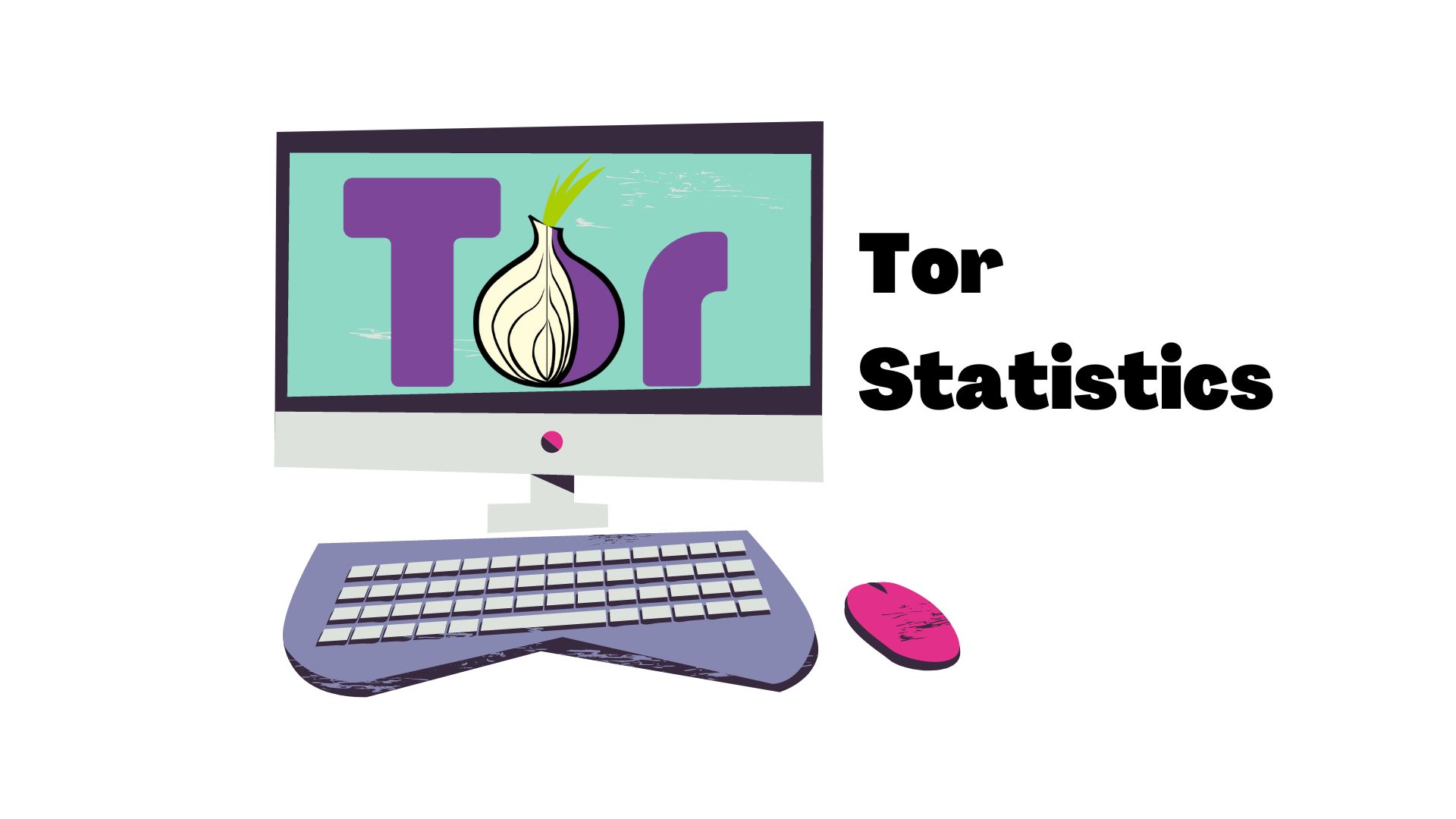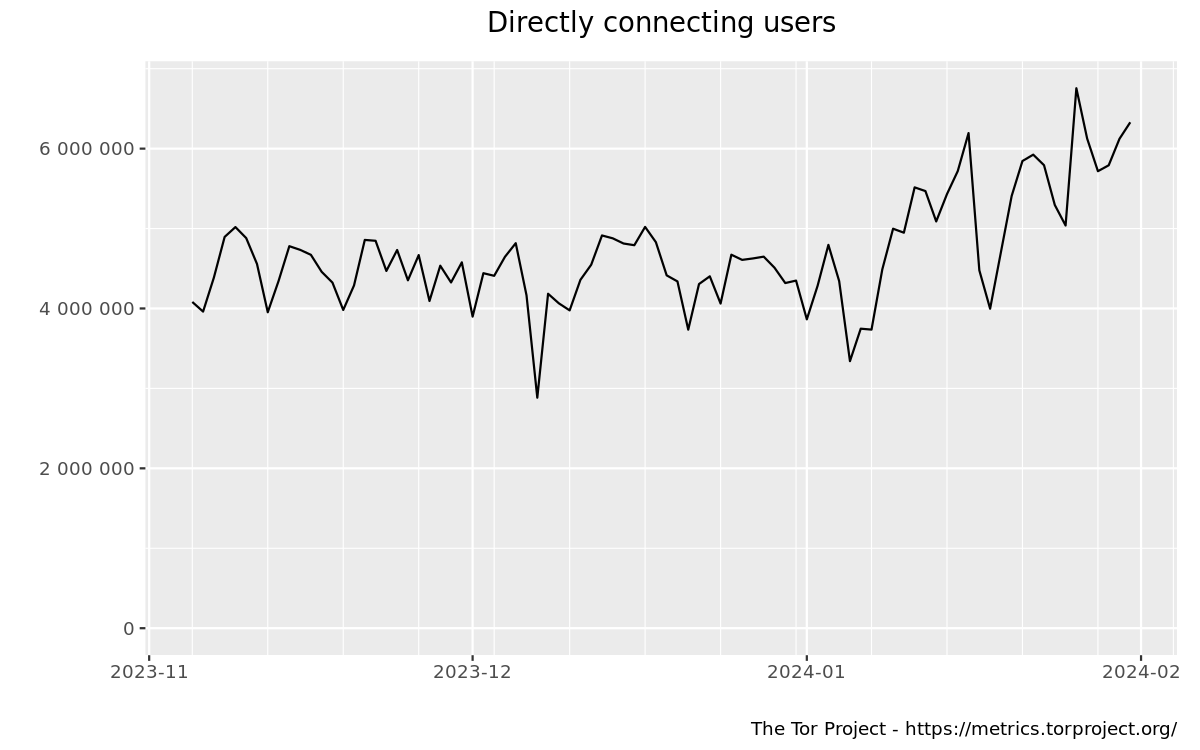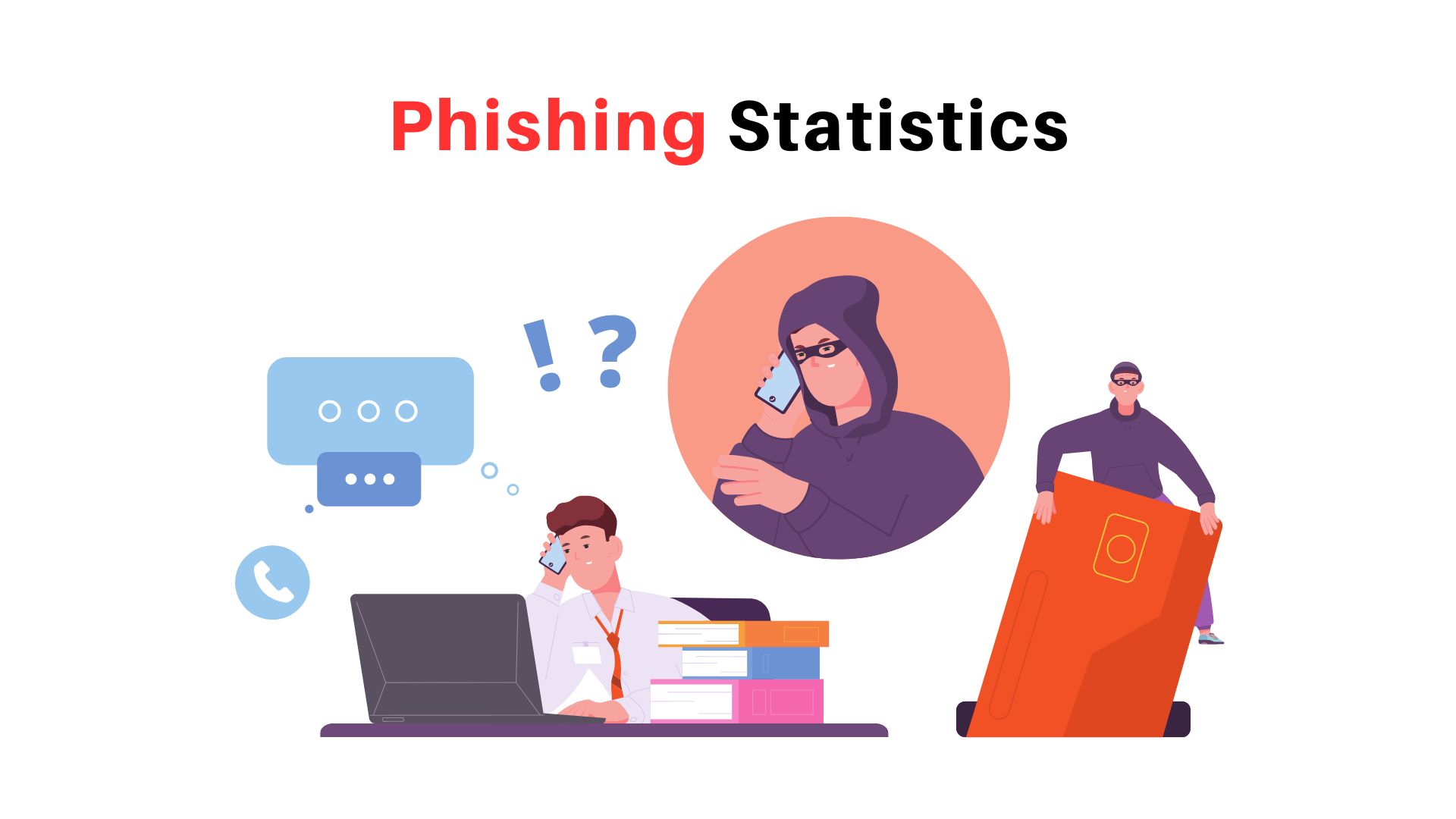20 Eye-Opening Tor Statistics That You Need To Know in 2024

Page Contents
Tor Statistics: Everyone has a favorite web browser for surfing the internet. It's usually Google Chrome, Firefox, or Safari. Also, these browsers account for more than 95% of all internet users. However, other options offer greater security and anonymity. Tor is the most well-known example. Data is a valuable commodity, and individuals will go to tremendous lengths to acquire it.
Tor is one of the most widely used tools for secretly browsing the internet. It is very different from your standard web browser. Although it is often associated with the dark or deep web, there is more to it than meets the eye. In light of this, this article will discuss some interesting Tor statistics as well as clarifications on some commonly asked questions and myths about this browser.
Editor's Choice
- Between 26th April to 25th July 2023, Tor received an average of 40,000 Windows downloads per day.
- Whereas, there were more than 120,000 downloads to Windows between June and July 2023.
- Only 3% of all traffic on the Tor network comes from the Dark Web.
- Approximately 6.7% of Tor network users connect daily to onion/hidden services for malicious activities.
- Tor is used by more than 2 million people daily.
- Every day, approximately 100,000 people download the Tor browser from the Tor site.
- Tor contains more than 145,000 circuits.
- BitTorrent traffic accounts for a significant portion of the Tor traffic more than 40%.
- On the dark web, just 45% of sites host illegal activities and 55% of hidden sites are legal.
- Between July and October 2021, Lithuania experienced 23 downturns and 27 upturns. This indicates that there were censorship incidents.
- The number of crypto market vendors on Tor reached around 40,000 at one point.
- Tor has more than 65,000 different URLs with the .onion Ending.
- The FBI was able to apprehend nearly 200 people for engaging in illegal activities involving minors with the help of the dark web.
- The US government is one of Tor's funders and creators.
- On the dark web, bitcoin transactions were anticipated to reach $3.1 billion in 2023.
- 26% of Indian internet users access the dark Web through Tor and other comparable platforms.
You May Also Like To Read
- Desktop Browser Statistics
- Firefox Statistics
- Opera Browser Statistics
- Brave Browser Statistics
- UC Browser Statistics
- Internet Explorer Statistics
Key Tor Statistics 2024
- Daily Users: Tor's network is accessed by over 2 million users daily, highlighting its widespread use beyond just illicit activities.
- Traffic Composition: Surprisingly, visits to the dark web constitute only 1.5% of total Tor traffic, with the majority of users engaging in regular, legal internet activities.
- Dark Web Activities: Despite common misconceptions, only 45% of dark web sites host illicit activities, with a significant portion of .onion sites (55%) being legal and focused on privacy and freedom from surveillance.
- Global Use: Tor sees varied usage worldwide, with 26% of users from India accessing the dark web, followed by Russia (22%) and Brazil (21%). Russia leads in the daily mean users of Tor, showcasing the global reliance on Tor for anonymity and circumvention of censorship.
- BitTorrent Traffic: Over 40% of Tor's traffic comes from BitTorrent, indicating the network's role in peer-to-peer file sharing and the complexities of ensuring anonymity.
- Government Involvement: The United States government was among the creators and funders of Tor, primarily to protect data exchange among operatives and informants.
- Cryptomarket Dynamics: At one point, the number of cryptomarket vendors on Tor reached approximately 40,000, influenced by revelations of NSA surveillance. This points to the network's significant role in the digital underground economy.
- Legal and Illicit Sites: There are over 65,000 unique URLs with the .onion extension, of which a study found 10% cater to regular internet activities. Moreover, the Tor network facilitates both legal and illegal transactions, reflecting its dual nature.
Tor Users Statistics
Directly Connected Users

According to our analysis of Tor users data from November 5, 2023, to January 31, 2024, several key insights can be derived regarding the usage trends of Tor, reflecting patterns of direct connections that exclude clients connecting via bridges. These insights include:
- Significant Daily User Fluctuations: The number of daily users accessing Tor directly experiences considerable variations, ranging from approximately 2.88 million to over 6.75 million within the observed period. This suggests a dynamic user base with potentially shifting needs or responses to external factors such as political events, cybersecurity threats, or awareness campaigns about privacy.
- Peak Usage Periods Indicate Increased Privacy Concerns: Notably, the highest number of users, reaching up to 6.75 million on January 26, 2024, indicates peak periods of increased interest or concern regarding privacy and anonymity online. Such spikes may correlate with specific global or regional events that heighten awareness or demand for Tor’s privacy-preserving capabilities.
- Consistent User Engagement Over Time: Despite daily fluctuations, the consistently high numbers of Tor users highlight a sustained engagement with the platform. This ongoing reliance on Tor underscores the importance of anonymity tools in the digital age, where privacy concerns and surveillance threats are pervasive.
- Gradual Increase in User Base Towards the End of the Year: An upward trend in the number of users towards the end of 2023 and into the beginning of 2024 suggests a growing awareness and adoption of Tor. This could be attributed to various factors, including enhanced efforts to promote digital privacy, increasing restrictions on internet freedom in certain regions, or the natural growth of the Tor network's reputation and reliability.
Top 10 Countries By Bridge Users
| Country | Mean Daily Users | Percentage of Total Users |
|---|---|---|
| Russia | 47,153 | 37.05% |
| Iran | 24,857 | 19.53% |
| United States | 15,113 | 11.87% |
| Germany | 4,042 | 3.18% |
| France | 3,038 | 2.39% |
| United Kingdom | 2,492 | 1.96% |
| China | 2,266 | 1.78% |
| Netherlands | 2,248 | 1.77% |
| India | 1,660 | 1.30% |
| Canada | 1,207 | 0.95% |
- Russia leads globally with the highest number of mean daily users accessing Tor via bridges, accounting for 37.05% of the total. This suggests a significant demand for anonymity and privacy tools in Russia, possibly due to internet censorship and surveillance concerns.
- Iran follows Russia with 19.53% of the daily users, indicating a similarly high reliance on Tor for circumventing internet restrictions and monitoring. This reflects the socio-political conditions driving the need for secure and anonymous communication.
- The United States ranks third, with 11.87% of users utilizing bridges to connect to Tor. Despite being in a region with relatively fewer restrictions on internet access, this usage highlights concerns about privacy and surveillance among American internet users.
- European countries like Germany and France, along with the United Kingdom, also feature in the top 10, although with significantly lower percentages (3.18%, 2.39%, and 1.96% respectively). This diversity indicates a widespread appeal of Tor across different regions, not just those facing overt censorship.
- The presence of China and India in the list, with 1.78% and 1.30% respectively, underscores the global nature of Tor's user base, spanning countries with vast populations and varied degrees of internet freedom.
Astonishing Tor Statistics
#1. The current number of Tor users is over 2 million daily active users.
This reflects Tor's widespread adoption for anonymous internet browsing, emphasizing its importance in the landscape of online privacy and security. For more detailed statistics and insights on Tor's usage, you can visit the Tor Metrics website
#2. At the end of the 2nd quarter of 2023, Tor received an average of 60,000 Windows downloads per day.
Windows is the most used platform for which people download Tor. According to Tor stats, the United States recorded roughly 60,000 Tor downloads daily over the same period; comparable to the average daily downloads on Windows. While Linux and macOS have less than 40,000 downloads every day. (Source: Tor Metrics)
#3. Only 1.5% of all traffic on the Tor network comes from the Dark Web.
Although you might believe that most individuals use Tor to access the dark corners of the internet, Tor stats show that a tiny percentage of its users actually utilize it for illegal activities. Most individuals use this browser to hide their internet activities from websites, ISPs, and advertisers. (Source: The Register)
#4. Approximately 6.7% of Tor network users connect daily to onion/hidden services for malicious activities.
Nearly 6.7% of Tor users visit the dark web or illegal web-hosted pages, which works out on average 1 in 20 users or around 135,000 out of the 2 million Tor users. Tor statistics show that these users are not geographically distributed equally, with a more significant proportion of hidden services traffic originating from politically “free” nations. (Source: PNAS)
#5. Tor is used by more than 2 million people daily.
Tor was primarily created for military use, but it has since evolved into a tool that is accessible to everyone. range of Tor from corporations and everyday individuals to political activists and journalists who seek to create secure communications, evade surveillance, and bypass censorship.
(Source: Daily Dot)
#6. Every day, approximately 100,000 people download the Tor browser from the Tor site.
The main reason Tor is so popular is that it always provides anonymity to its users at all times without any charge. According to Tor statistics, 6,000 volunteer relays are used to accomplish this. Each client builds a circuit with 3 relays and then connects to the server using that circuit. The relay's selection algorithms make sure that no relays with the same IP address are linked. (Source: Tor Project)
#7. Tor contains more than 145,000 circuits.
According to Tor statistics, nearly 44 machines are running Tor clients, meaning some circuits formed across those vantage points are selected more frequently. Although the creators of this system designed it to safeguard the privacy of its users, it is impossible to create a perfectly balanced algorithm. Therefore, a Tor traffic analysis reveals that few relays are more likely to be selected, even three times as frequently. As a result, there is a chance of eavesdropping and network invasion. (Source: SpringerLink)
#8. The US government is one of Tor's funders and creators.
It might surprise you that the US government provided the majority of the funding for Tor's development in the 1990s and the early 2000s. This was done to protect its informants and operatives as they exchanged data. (Source: Daily Dot)
#9. BitTorrent traffic accounts for a significant portion of the Tor traffic (over 40%).
According to Tor statistics, nearly 70% of BitTorrent users create P2P connections outside the Tor network. This renders most BitTorrent TCP connections and data invisible to the Tor network. This means that the number of BitTorrent users using Tor may likely be underestimated, leading to more hacker attacks. (Source: Usenix)
#10. On the dark web, just 45% of sites host illegal activities.
According to the most recent publicly available research of Tor traffic, which used a sample of 400 websites, many of them are not so dark. In fact, this research emphasizes both positive and negative aspects of dark web activities. Most (45%) of the content that was actually prohibited fell on drugs.
(Source: The Daily Dot)
#11. Russia is the country with the highest number of Tor users per day.
As of the latest statistics from June to September 2023, daily Tor users by country indicate that Russia is the leader of Tor users, with nearly 47,973 users. Iran is in the second rank, with 41,067 daily users. The United States is on third rank on the list, with roughly 25,434 users per day. Tor usage stats are followed by Germany (4,448), Turkmenistan (5,157), China (3,957), France (2,936), the United Kingdom (2,858), Netherlands (2,172), and India (2,030). (Source: Statista.com)
#12. Tor is a network as well as a browser.
The term “Tor” is really used to refer to two distinct things. First, Tor refers to a network that runs a server app and hosts volunteer computers. Second, Tor is also used the enable users to access the network. (Source: Daily Dot)
#13. Lithuania experienced 56 downturns and 82 upturns.
This indicates that there were censorship incidents.
According to Tor statistics, Lithuania experienced the most efforts at censorship during that time. Mongolia is second on the list with 39 upturns and 34 downturns, followed by Barbados with 35 upturns and 29 downturns. (Source: Tor Project)
#14. The FBI was able to apprehend nearly 200 people for child victimization material with the help of the dark web.
In 2015, the Bureau organized a massive operation to catch and track those using the child Pedophile website Playpen. The FBI took control of it and installed malware to track website visitors. It is also not an isolated incident. At one point, the FBI is believed to have controlled more than half of all Illegal child content websites on the platform. (Source: The Daily Dot)
#15. The number of crypto market vendors on Tor reached around 40,000 at one point.
For reference, AlphaBay and the Silk Road are online black markets that make up part of the dark net. According to research from 2020, their numbers on AlphaBay, which took the role of Silk Road, began to increase after Snowden revealed the extent of the National Security Agency's surveillance. These crypto markets primarily serve illegal drug sales based on a few Tor statistics. However, individuals occasionally use these platforms to talk about libertarianism and politics. Even the administrator of Ross Ulbricht, Silk Road, hosted a book club about politics on his website. (Source: PNAS)
#16. On the dark web, bitcoin transactions were anticipated to reach $1 billion in 2019.
Bitcoin transactions in 2018 amounted to $872 million, making it one of the most widely used payment methods on dark web marketplaces and browsers like Tor. Pharmaceutical and recreational drugs are the most popular goods, followed by counterfeit or stolen documents such as bank credentials, credit cards, and IDs. (Source: IMF)
#17. According to one study, linkability enables programmers to track approximately 27% of HTTP streams coming from secure browsers such as Tor.
It is not only that. VPNs can be used for Tor to provide an extra layer of security to protect their data. It enabled programmers to find 193% of more streams. They were able to track just 9% of all streams using the Tor browser, according to Tor statistics, using BitTorrent as the insecure application and instrumented exit nodes. These programmers created two attacks to track BitTorrent users on Tor and successfully revealed 10,000 IP addresses. So contrary to what many people think, using Tor does not ensure anonymity. (Source: USENIX)
#18. 26% of Indian internet users access the dark Web through Tor and other comparable platforms.
According to Tor traffic analysis data, India is the country with the highest population of users accessing the dark web through Tor. Brazil and Russia follow closely with 21% and 22%, respectively. Indonesia is next with 20%, followed by South Africa, Turkey, and Sweden with 16% each. (Source: Statista)
#19. Tor has more than 65,000 different URLs with the .onion suffix.
The fact that all .onion domains belong to the dark web does not indicate that the information on them is “dark.” It is because all of the websites' servers and identities are hidden. After looking at 400 randomly chosen .onion research, Terbium Lab's company discovered that more than half of all dark web domains are legal. (Source: IMF)
#20. Facebook engineers released a Tor-compatible version of Facebook in 2014.
The Tor version of this social networking site is very useful for people who are concerned about privacy, especially those who reside in nations where Facebook is not allowed, such as Iran and China. A Facebook software engineer named “Alec Muffett” said in April 2016 that more than 1 million users visited this social media site through the gateway each month. (Source: Daily Dot)
#21. It might just cost a few thousand US dollars each month to degrade Tor's performance.
In order to penetrate the defense of the country, attackers could use a few currently inactive Tor bridges. For example, it might only cost $17,000 each month to route traffic to all 12 of the Tor bridges now in use. According to Tor statistics, if the same scenario plays out with all 38 bridges (assuming those currently offline are brought back online), the monthly cost could be $31,000. Later, researchers claimed that launching DDoS attacks on TorFlow servers may cost as little as $2,800 per month. (Source: ZDNet)
Conclusion
In 2024, the Tor network continues to serve as a crucial tool for ensuring online anonymity and privacy, catering to over 2 million daily users. The statistics reveal a diverse user base, ranging from journalists and activists in regions with stringent internet censorship to ordinary individuals seeking to protect their online activities from surveillance. Despite common misconceptions, only a small fraction of Tor's traffic, specifically 1.5% to 3%, is associated with the dark web, underscoring its primary use as a privacy tool rather than for illicit activities. Furthermore, the network boasts over 65,000 unique .onion URLs, with a significant portion of these hosting legal content, challenging the stereotype of the dark web as predominantly a hub for illegal activities.
From a market research analyst's perspective, the evolving landscape of Tor usage reflects a growing consciousness and demand for privacy and security in the digital age. The involvement of the United States government as one of the network's creators and investors, alongside the significant downloads and usage metrics, indicate Tor's critical role in the broader context of internet freedom and privacy. The network's infrastructure, with over 145,000 circuits and a significant volume of BitTorrent traffic, further highlights its technological robustness and the complex needs it serves. As we move forward, Tor remains an indispensable resource for users worldwide, offering a blend of anonymity, privacy, and a safeguard against censorship, with its utility extending far beyond the realms of the dark web
Sources

Barry is a lover of everything technology. Figuring out how the software works and creating content to shed more light on the value it offers users is his favorite pastime. When not evaluating apps or programs, he's busy trying out new healthy recipes, doing yoga, meditating, or taking nature walks with his little one.



